Span range Short, Medium Design effort low | Movable No Falsework required No | |
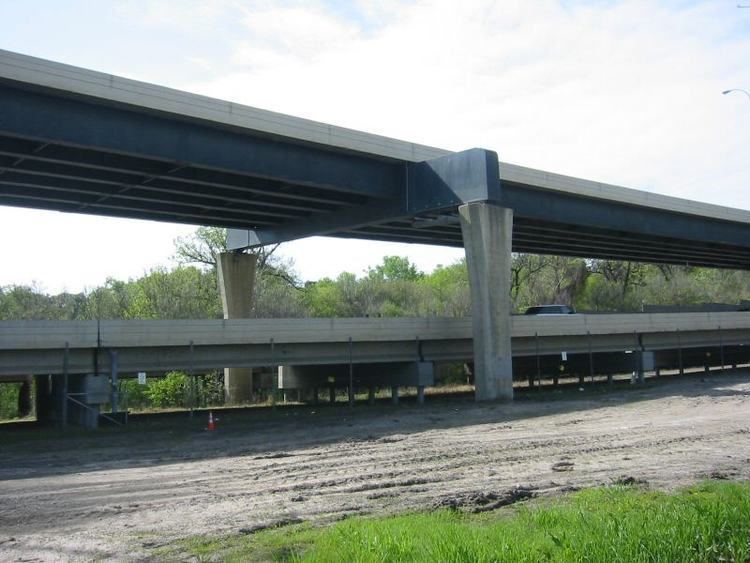 | ||
Carries Pedestrian, Truck, Light rail, Passenger rail terminology Similar Plate girder bridge, Beam bridge, Segmental bridge, Railway bridge, Timber bridge | ||
Design of a single cell rcc box girder bridge
A girder bridge, in general, is a bridge that uses girders as the means of supporting the deck. A bridge consists of three parts: the foundation (abutments and piers), the superstructure (girder, truss, or arch), and the deck. A girder bridge is very likely the most commonly built and utilized bridge in the world. Its basic design, in the most simplified form, can be compared to a log ranging from one side to the other across a river or creek. In modern girder steel bridges, the two most common shapes are plate girders and box-girders.
Contents
- Design of a single cell rcc box girder bridge
- Steel plate girder bridge
- Design
- Types of girders
- History
- References
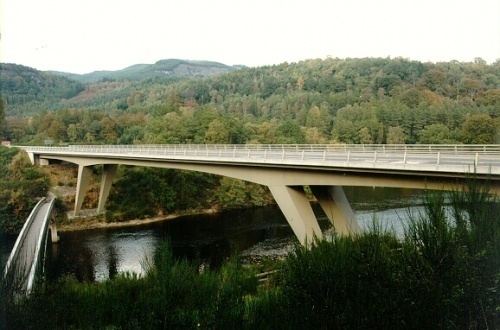
The term "girder" is often used interchangeably with "beam" in reference to bridge design. However, some authors define beam bridges slightly differently from girder bridges.
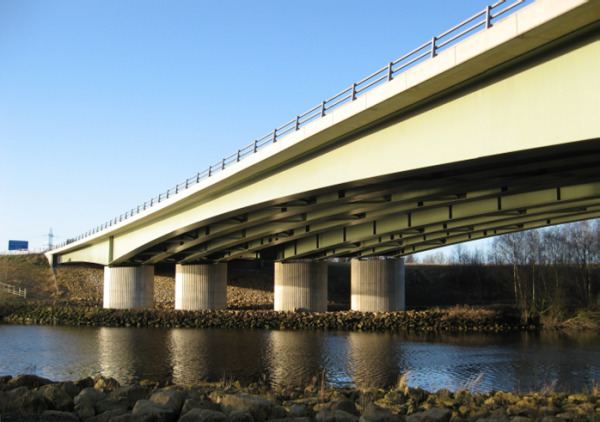
A beam may be made of concrete or steel - many shorter bridges, especially in rural areas where they may be exposed to overtopping and corrosion, will utilize concrete box beams. The term "girder" is typically used to refer to a steel beam. In a beam or girder bridge, the beams themselves are the primary support for the deck, and are responsible for transferring the load down to the foundation. Material type, shape, and weight all affect how much weight a beam can hold. Due to the properties of inertia, the height of a girder is the most significant factor to affect its load capacity. Longer spans, more traffic, or wider spacing of the beams will all directly result in a deeper beam. In truss and arch-style bridges, the girders are still the main support for the deck, but the load is transferred through the truss or arch to the foundation. These designs allow bridges to span larger distances without requiring the depth of the beam to increase beyond what is practical - however, with the inclusion of a truss or arch the bridge is no longer a true girder bridge.
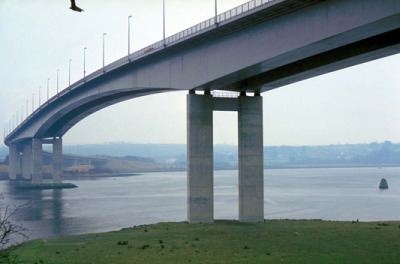
Steel plate girder bridge
Design
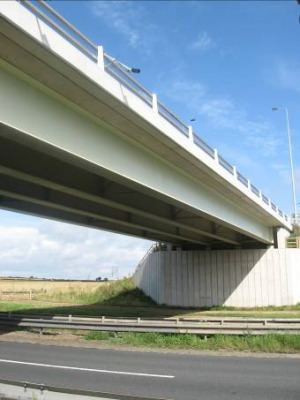
All bridges consist of two main parts: the substructure, and the superstructure. The superstructure is everything from the bearing pads, up - it is what supports the loads and is the most visible part of the bridge. The substructure is the foundation, what transfers the loads from the superstructure to the ground. Both parts must work together to create a strong, long-lasting bridge.
The superstructure consists of several parts:
The substructure is made of multiple parts as well:
Types of girders
History
Girder bridges have existed for millennia in a variety of forms depending on resources available. The oldest types of bridges are the beam, arch and swing bridges, and they are still built today. These types of bridges have been built by human beings since ancient times, with the initial design being much simpler than what we enjoy today. As technology advanced the methods were improved and were based on the utilization and manipulation of rock, stone, mortar and other materials that would serve to be stronger and longer.
In Rome, the techniques for building bridges included the driving of wooden poles to serve as the bridge columns, and then filling the column space with various construction materials. The bridges constructed by Romans were at the time basic; however very dependable and strong while serving a very important purpose in everyday societal life.
As the industrial revolution came and went, new materials with improved physical properties were utilized; and wrought iron was replaced with steel due to steel's greater strength and larger application potential.
